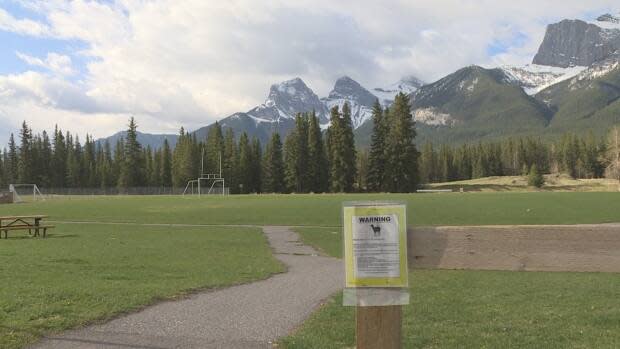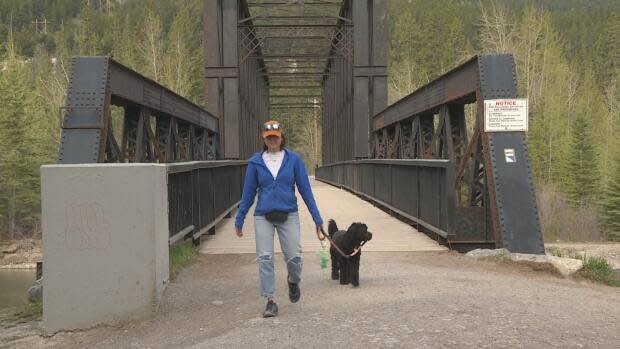Caution urged during elk calving season in Canmore and Banff area

In the foothills and mountains west of Calgary, spring elk calving season is underway — and wildlife experts are advising people to be cautious when venturing outdoors, asking them to give the animals space.
Female elk typically begin giving birth between late May and early June and will be protective of their offspring, said John Paczkowski, a wildlife coexistence expert with Alberta Parks.
"Over the next, say, three to four weeks will be the peak of it, but it's on now," he said.
Paczkowski said it's particularly along pathways, trails and parks and on the edges of communities, like Canmore and Banff, that human-wildlife contact can happen.
"People who are walking right on the edge of town, that's where you're more likely to have those surprise encounters," he said.

He said populated areas can be a "bit of a refuge" for mother elk, away from usual predators.
"The mothers get very defensive, obviously protecting their calves. The [new] calves have very limited mobility, but they're incredibly vulnerable," said Dan Rafla, human wildlife coexistence specialist for Banff National Park.
The best thing you can do is give the ungulates lots of space — about 30 meters — especially if you see a lone female elk away from her herd, says Rafla. That means not getting close to take pictures, too.
"If you see a female by herself, that might mean she has a calf hidden. You may never see that. It may be that she's ready to give birth," he said.
Other tips by Rafla are to travel in groups, keep children close and pets on a leash, carry a walking stick, bear spray or even umbrella with you that you could use to give a warning to the elk.
He said if you are faced with an elk, maintain eye contact, make yourself appear larger, and if needed, seek protection by putting something between you and the animal like a garbage can, tree or car can be helpful.

Efforts to reduce contact
Paczkowski said there were 11 contact charges between people and elk last year in the area around Canmore, which he called "a bit of a spike."
"People were contacted by an elk and knocked down and in some cases injured. So it's a bit of an increasing problem," he said.
He estimates between 120-150 elk are in the area this year.
Park officials in Banff National Park have again closed down the west slope of Tunnel Mountain in order to protect a preferred space for calving from human interruption.
Rafla said the closure allows elk, who prefer that area, to calve in peace, and also ensures a protected area to relocate mother and calf elk from more busy spots in and around town.
He and other park officials will also sometimes temporarily close areas that mother and calf are in until they have safely moved on, or use hazing techniques to shoo the animals out of town and into protected areas.
With files from Dave Gilson and Jennifer Dorozio

 Yahoo Movies
Yahoo Movies 
